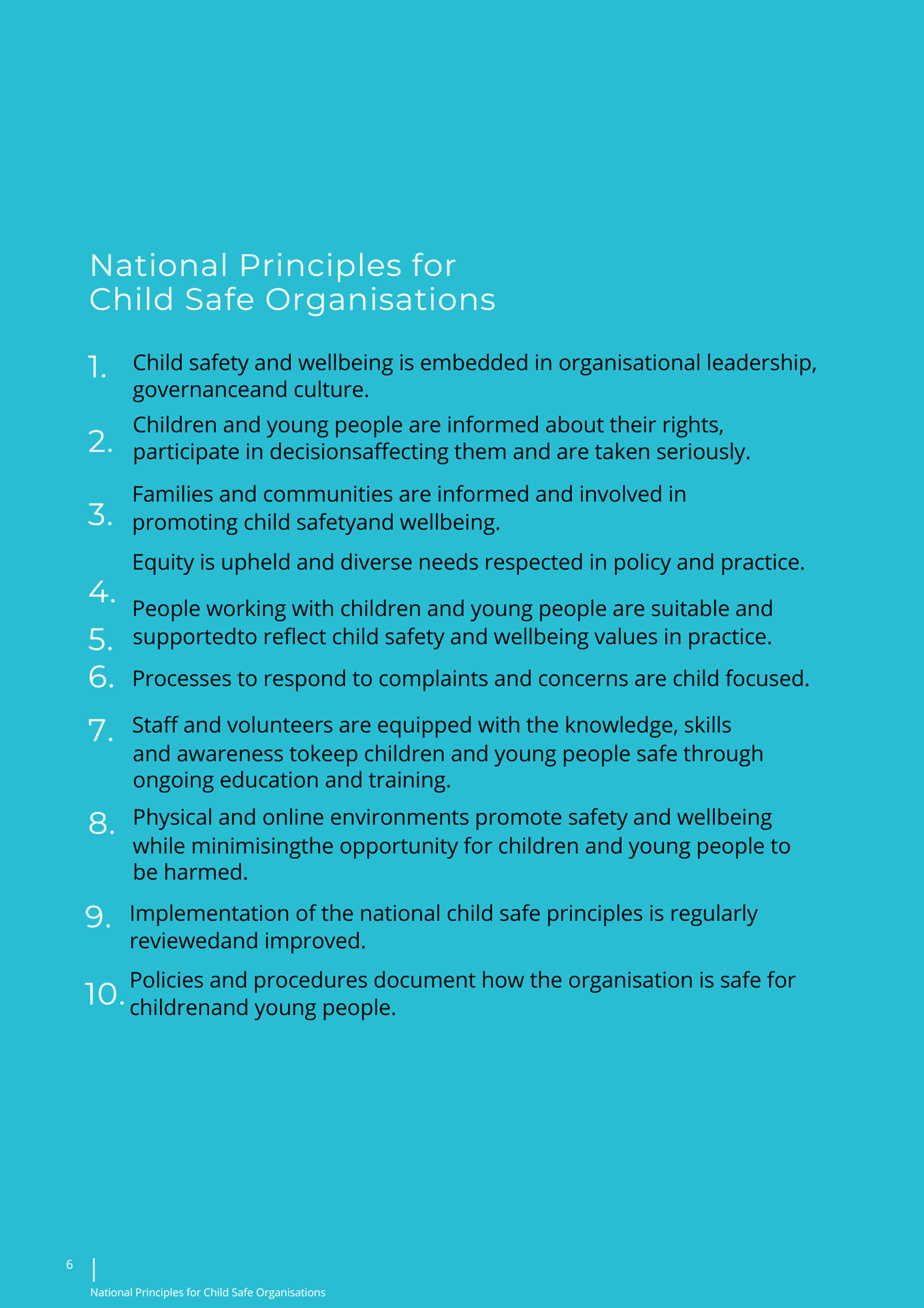As a community, historically we have fallen short in our duty to protect our children. The Royal Commission into Institutional Responses to Child Sexual Abuse in 2017 illuminated this stark reality and set actionable recommendations and guidance for safeguarding our children and young people in Australia. Each state in Australia has since developed its own version of the Child Safe Standards, or are the recommendations put forward by the National Principles for Child Safe Organisations, but the core message remains unified: Child safety is everyone’s responsibility.
These standards are not just a set of guidelines for organisations; they are a call to action for each of us. They urge individuals, organisations and the wider community to take proactive measures in preventing, identifying, and responding to allegations of harm to children. The Australian Bureau of Statistics found in 2020-2022 that an estimated 2.7 million Australians aged 18 years and over, which equates to 14% or 1 in every 7 members of the entire population of Australia experienced childhood abuse in their lifetime. Considering this, if we take an average 100 place early learning service that provides education and care to approximately 250 children across a week. 35 of those children either have experienced, are currently experiencing, or will directly experience childhood abuse.
As Early Childhood Professionals, we are uniquely placed in the lives of children, families and communities to engage, build relationships and minimise risks to children. We interact daily with children, families, and communities, and this gives us a unique opportunity to foster safe environments and build trusting relationships. Early Learning services and professionals are identified in the frameworks as key stakeholders in this process of protecting children from abuse. Yet many educators are still unsure what or how to engage with the Child Safe Standards.
To help navigate this journey into the child safe standards or delving ever deeper into embedding practice, here are some simple steps that can guide you in embedding these vital practices into your daily work:
Step 1: Allocate a Champion
Exploration of the standards needs to be a team project, but every bus needs a driver. So find someone enthusiastic. They need not be an expert in the Standards initially, but simply need the enthusiasm to drive the ideas forwards.
Step 2: Dive Into the Standards
Take some time to familiarize yourself with your state or territory’s specific Child Safe Standards. The language is designed to be accessible, so even a brief review can provide valuable insights. Once you’re comfortable, consider how you can communicate these standards with your team and families.
Step 3: Reflect and Innovate
Now is the time for critical reflection. Some reflective questions to consider:
- How can we simplify the standards into actionable, single-step questions to identify what we’re doing well and where we need improvement?
- Who can contribute to our thinking on this?
- Are we actively seeking and incorporating feedback from families? If not, how can we start?
- Are we including the children’s voices? If not, how can we? If we are, are their voices being truly utilised and leading to genuine change?
- How often are we auditing our child safety practices? Who is responsible for this, and how is it communicated within the team?
- Have we set clear goals for improving our child safety practices, and are these integrated into our Quality Improvement Processes?
- Are we creating action plans or actionable steps to improve our child safety practices?
Remember, integrating these practices into your daily routine doesn’t have to be an additional burden on an already busy workload. Exploring child voice as part of your daily educational program adds no additional time or effort, but makes sure that children are active participants in this journey and it can be seamless and enriching to children’s learning. Completing audits and action planning around child safety, while more paperwork intensive, offers solid evidence in your quality improvement processes and your commitment to continuous improvement.
Child safety often gets relegated to the bottom of our to-do lists, overshadowed by more immediate concerns. However, as professionals working with the youngest and most vulnerable members of our society, it is both our professional and ethical duty to ensure these children are safe.
Weaving the Child Safe Standards into your daily practice can be a shift in mentality, but it is achievable. Use team meetings to discuss child supervision, policy reviews to address privacy and social media issues, and family meetings to explore any concerns.
Don’t forget the role of children in their own safety. Everyday, remember to take those small, quiet, everyday moments with children and pause. Allow children the time to speak. Importantly, you then need to actively listen. Listen to what the children tell you. Because sometimes, you may be the only person that they will tell.
Let’s commit to making child safety a priority. Together, we can build environments where every child feels secure and valued.
State Specific Child Safety Requirements
NSW: https://education.nsw.gov.au/schooling/school-community/child-protection/child-safe-standards
NT: https://education.nt.gov.au/__data/assets/pdf_file/0015/1119012/child-safety-policy.pdf
SA: https://dhs.sa.gov.au/how-we-help/child-and-family-support-system-cfss/child-safe-environments
VIC: https://ccyp.vic.gov.au/child-safe-standards/the-11-child-safe-standards/
WA: https://www.wa.gov.au/organisation/department-of-communities/child-safe-organisations
National Principles for Child Safe Organisations: https://childsafe.humanrights.gov.au/sites/default/files/2019-02/National_Principles_for_Child_Safe_Organisations2019.pdf
References
https://www.abs.gov.au/media-centre/media-releases/1-7-australians-have-experienced-childhood-abuse
